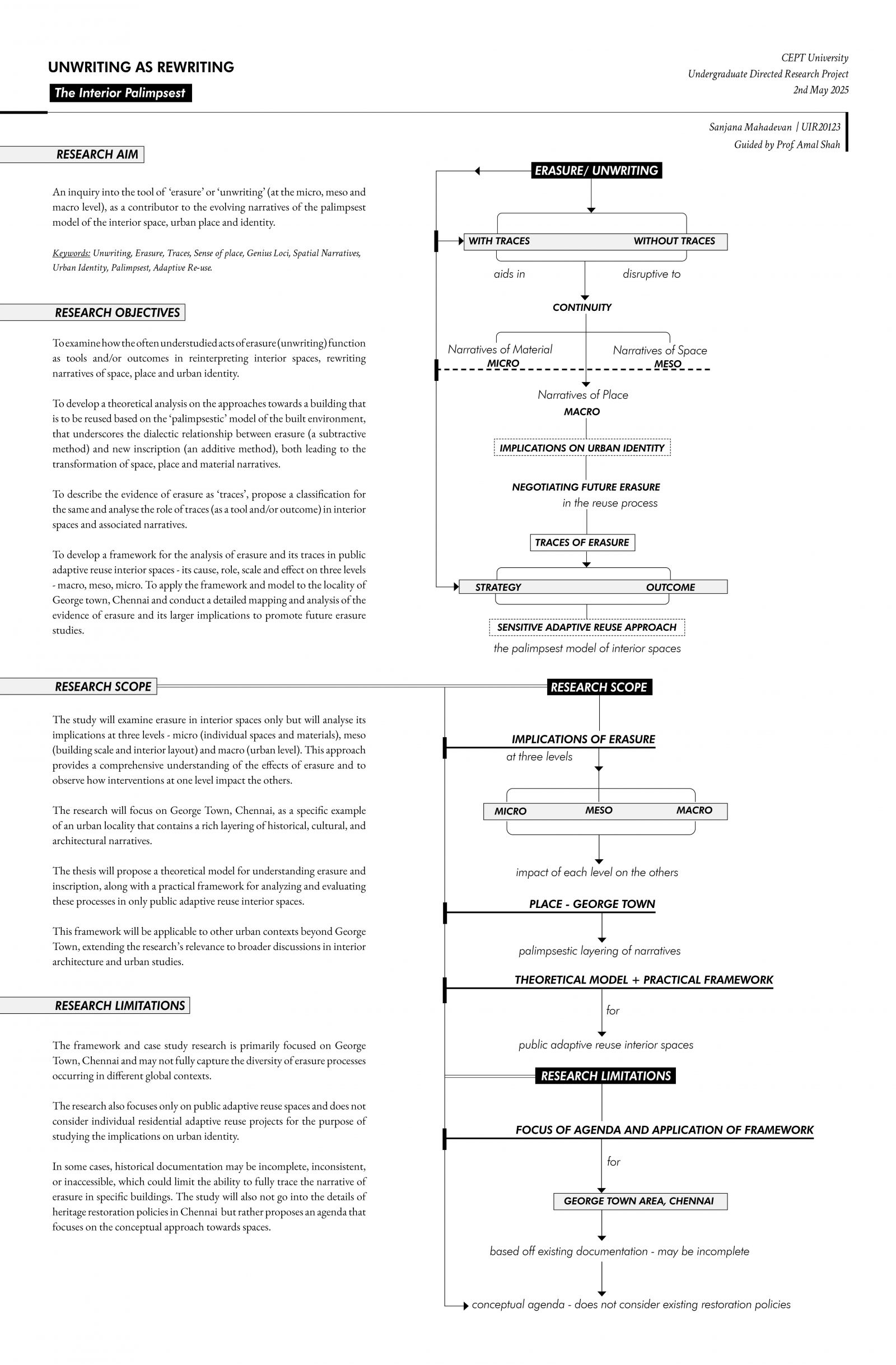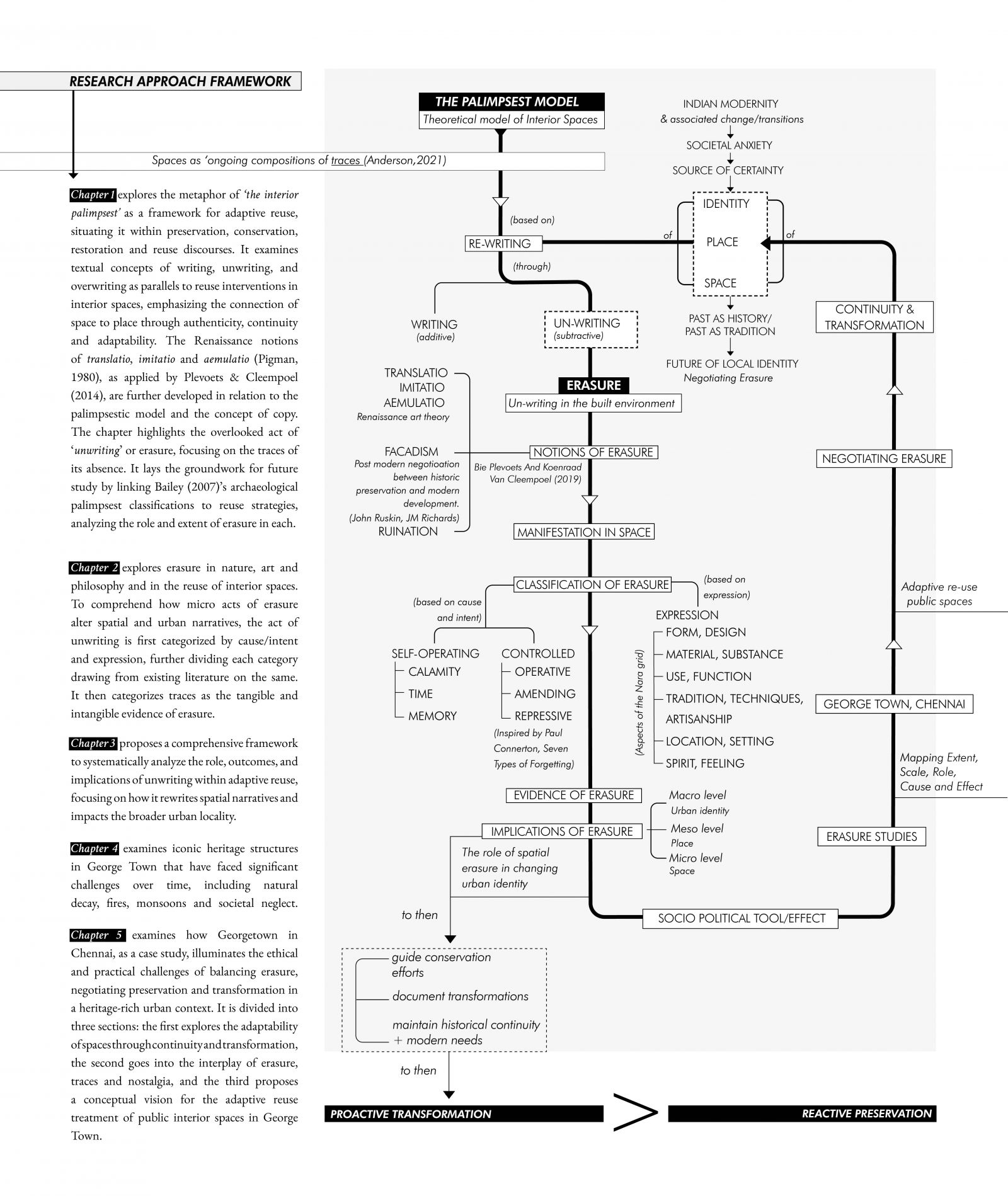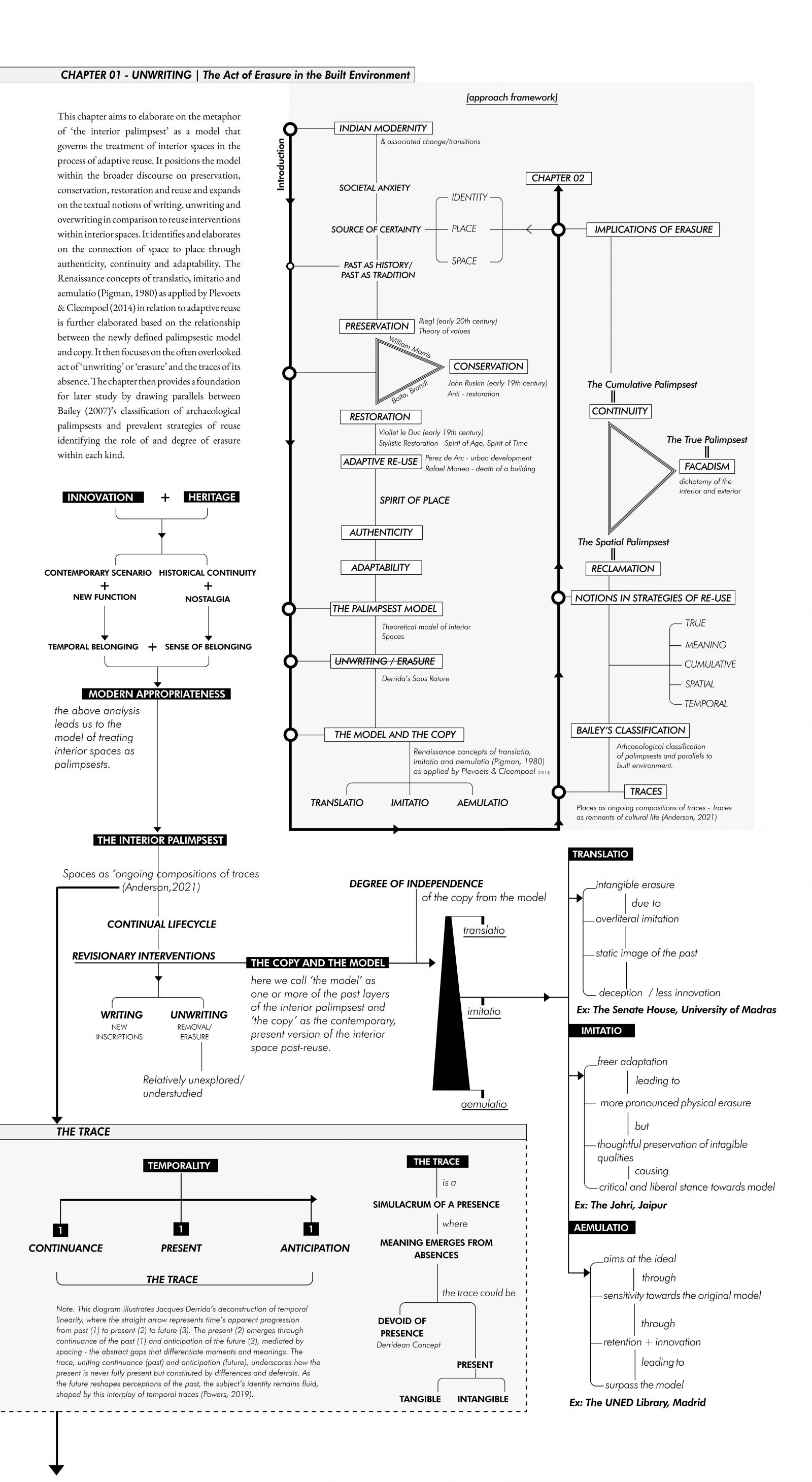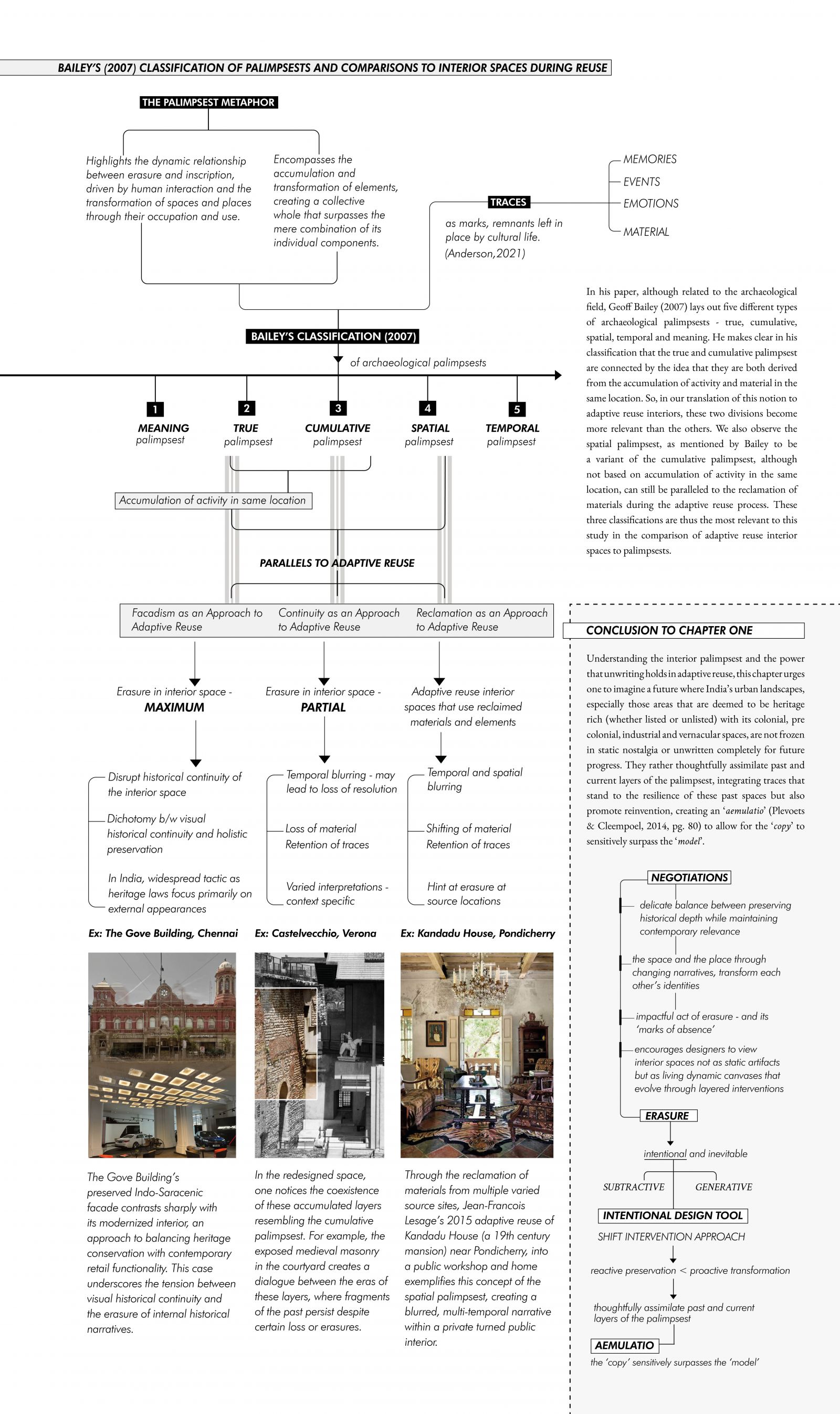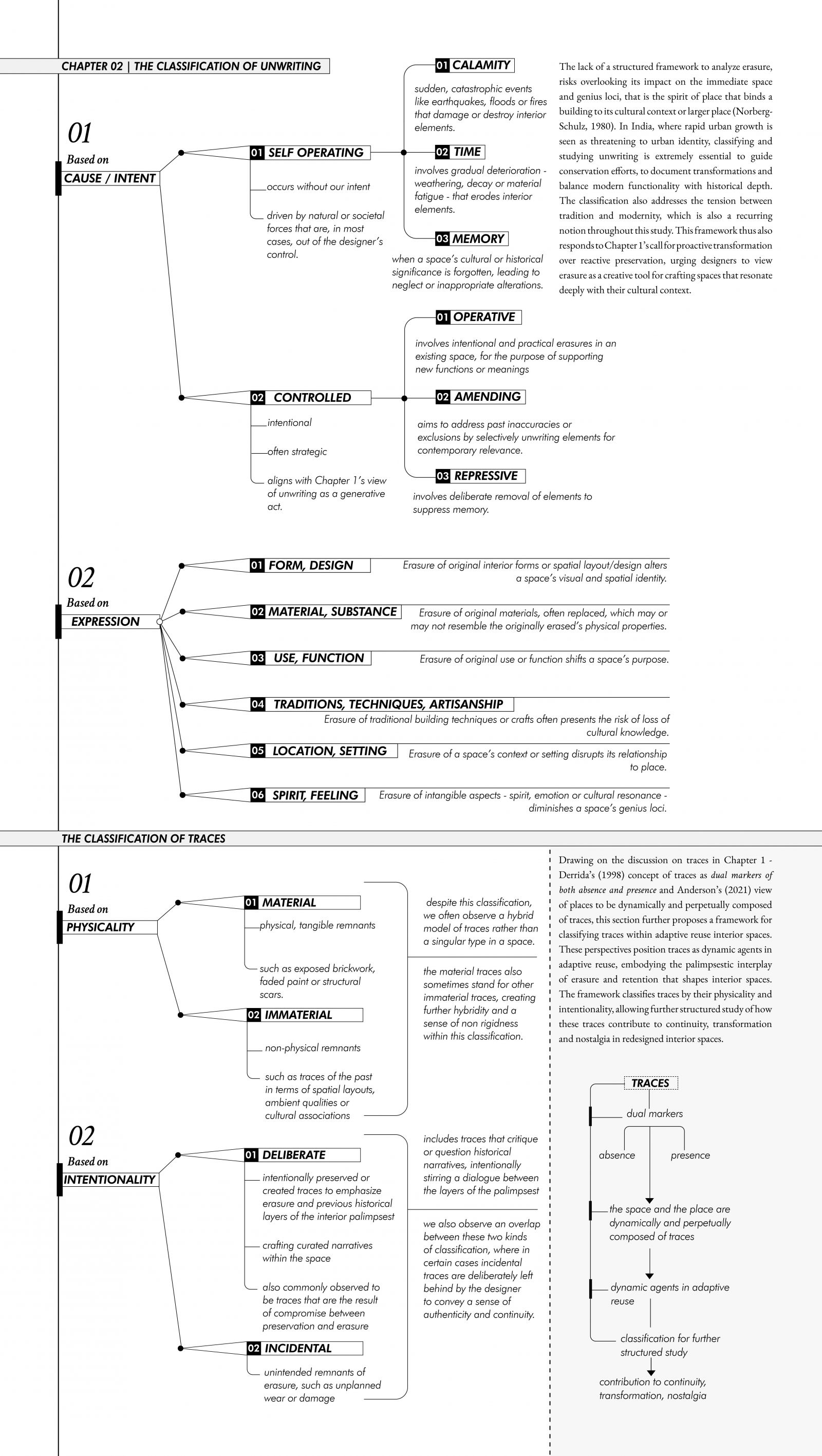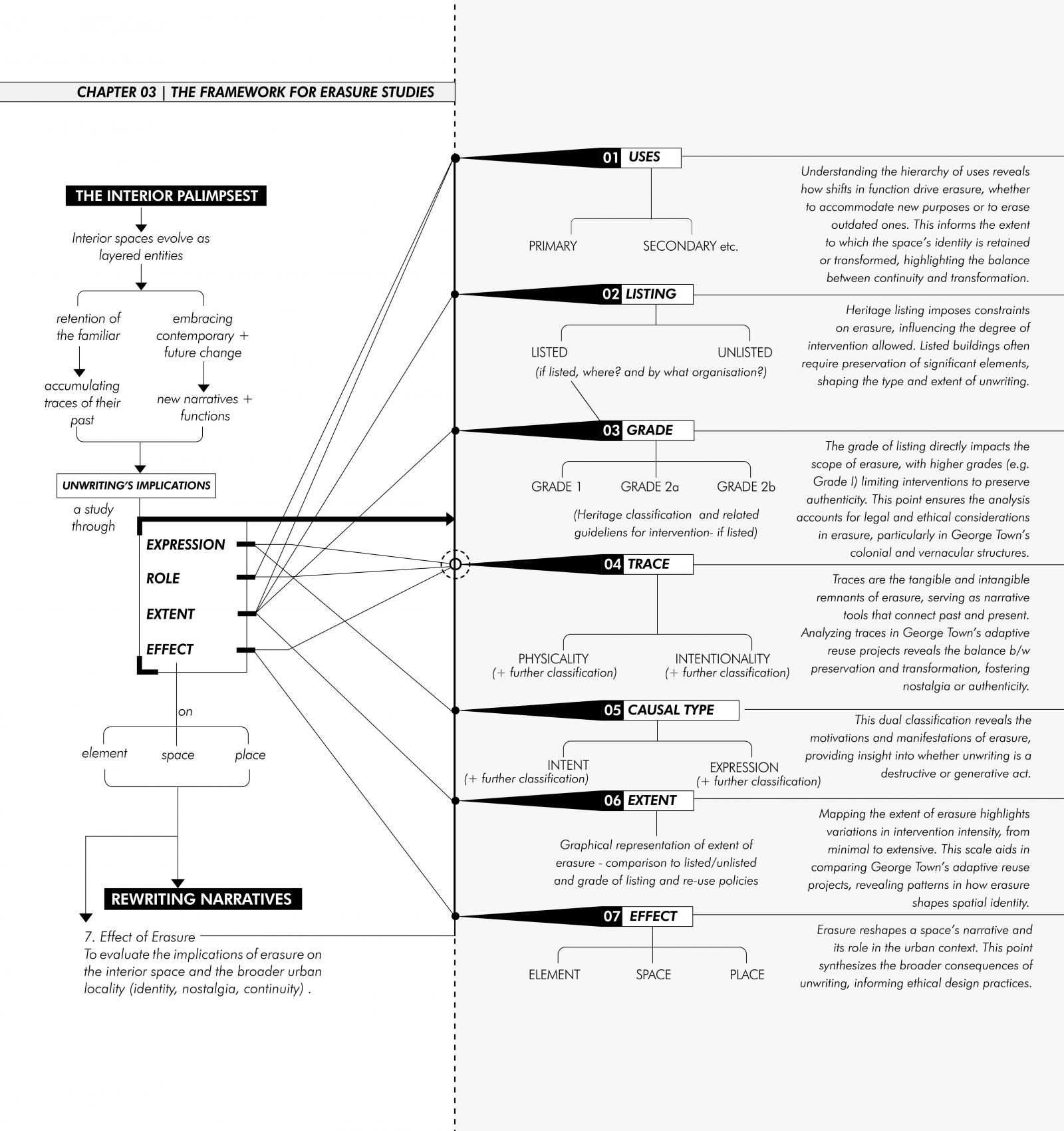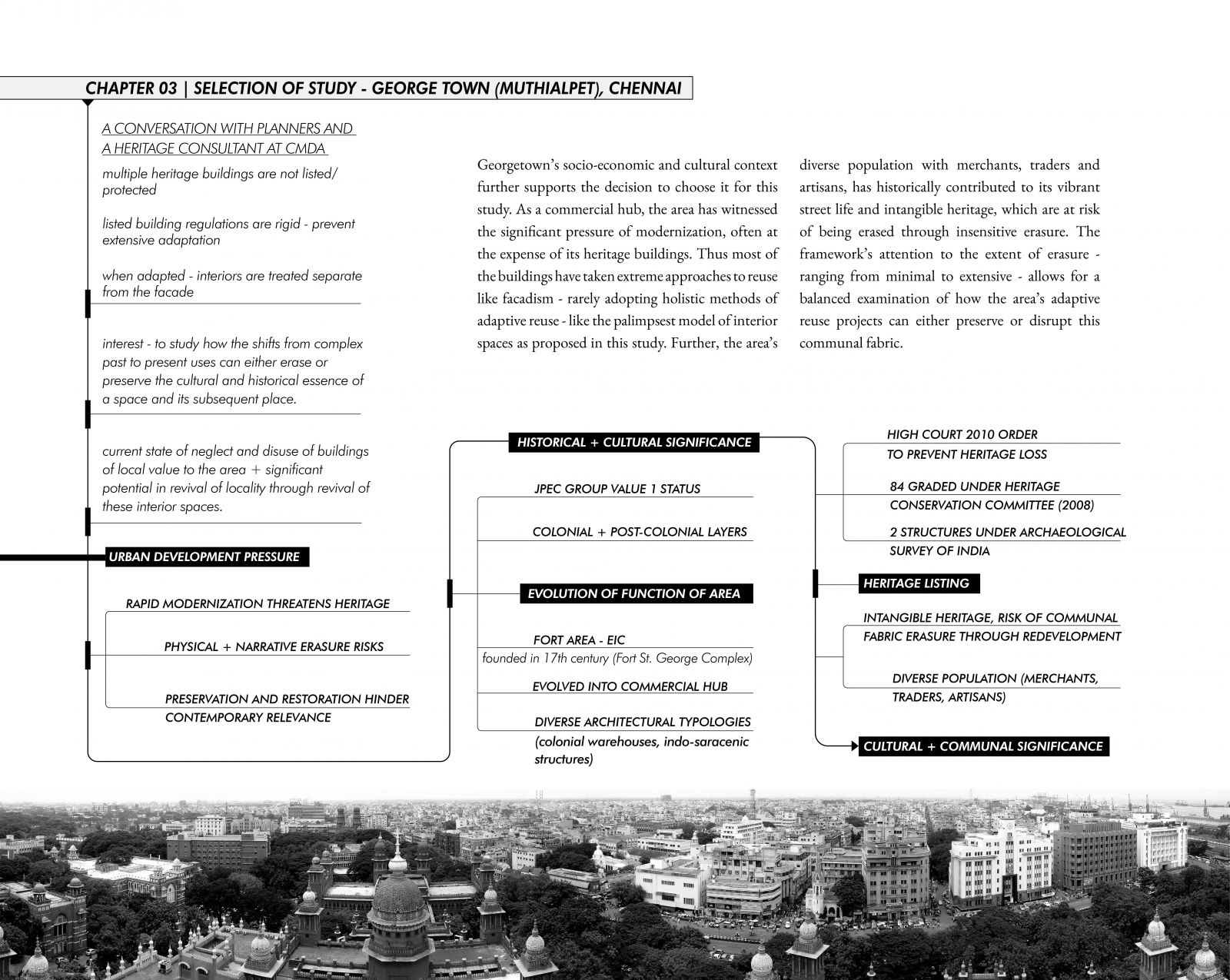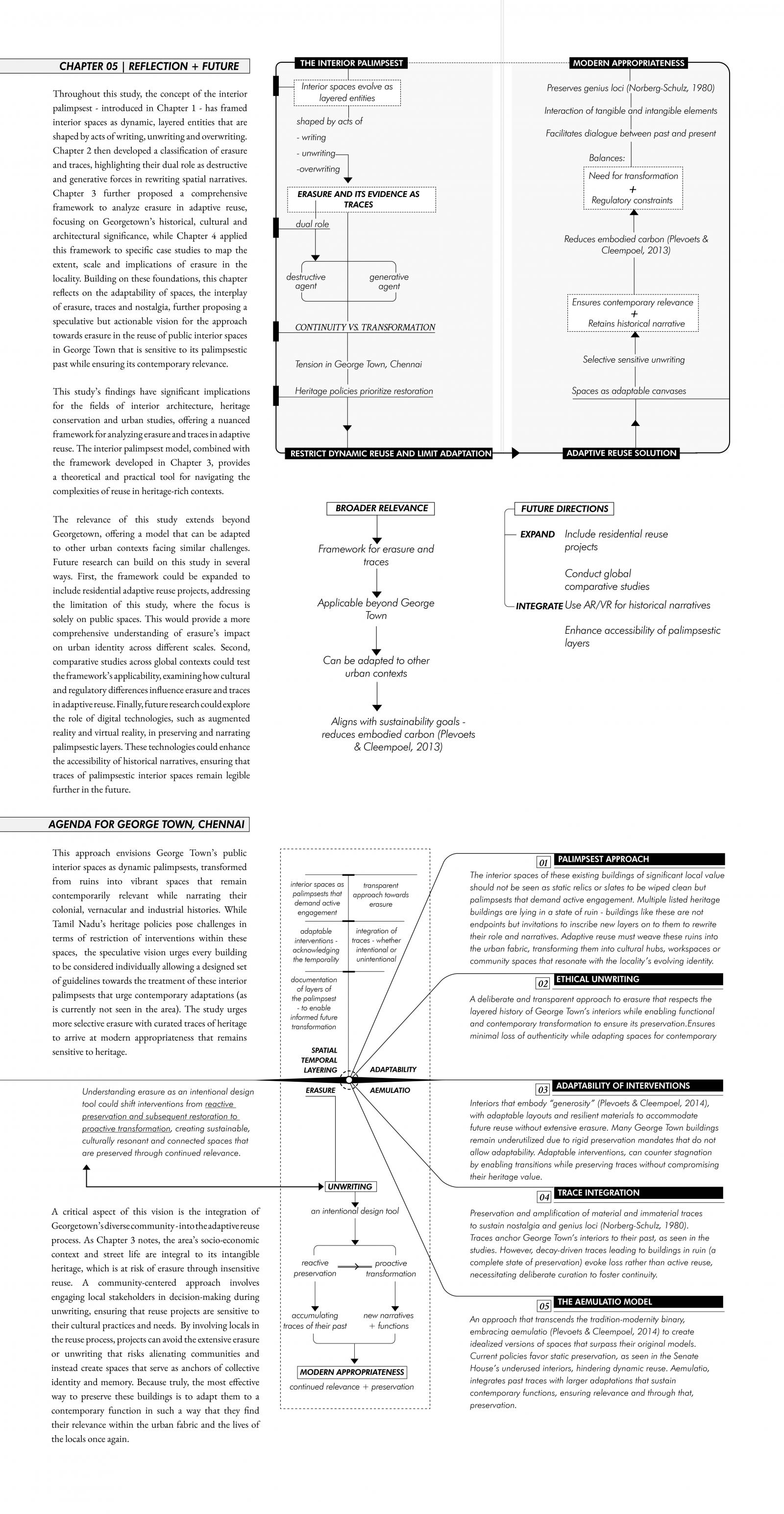Your browser is out-of-date!
For a richer surfing experience on our website, please update your browser. Update my browser now!
For a richer surfing experience on our website, please update your browser. Update my browser now!
This research investigates the often understudied act of 'unwriting' or erasure as a subtractive, generative and transformative agent within the palimpsest model of interior spaces (an approach to adaptive reuse) and its larger implications on the urban place. By studying erasure’s role in reshaping spatial narratives and urban identity, it proposes a theoretical framework to study its role, cause, scale and effect across micro, meso and macro levels urging future erasure studies. The study also classifies traces as the evidence of erasure - as tools for authenticity and nostalgia, applying this framework to the case of George Town, Chennai. Through case study analysis, it advocates for ethical unwriting that acknowledges heritage conservation, further proposing a speculative but actionable vision for the approach towards erasure in the reuse of public interior spaces in George Town that is sensitive to its palimpsestic past while ensuring its sustained contemporary relevance.
